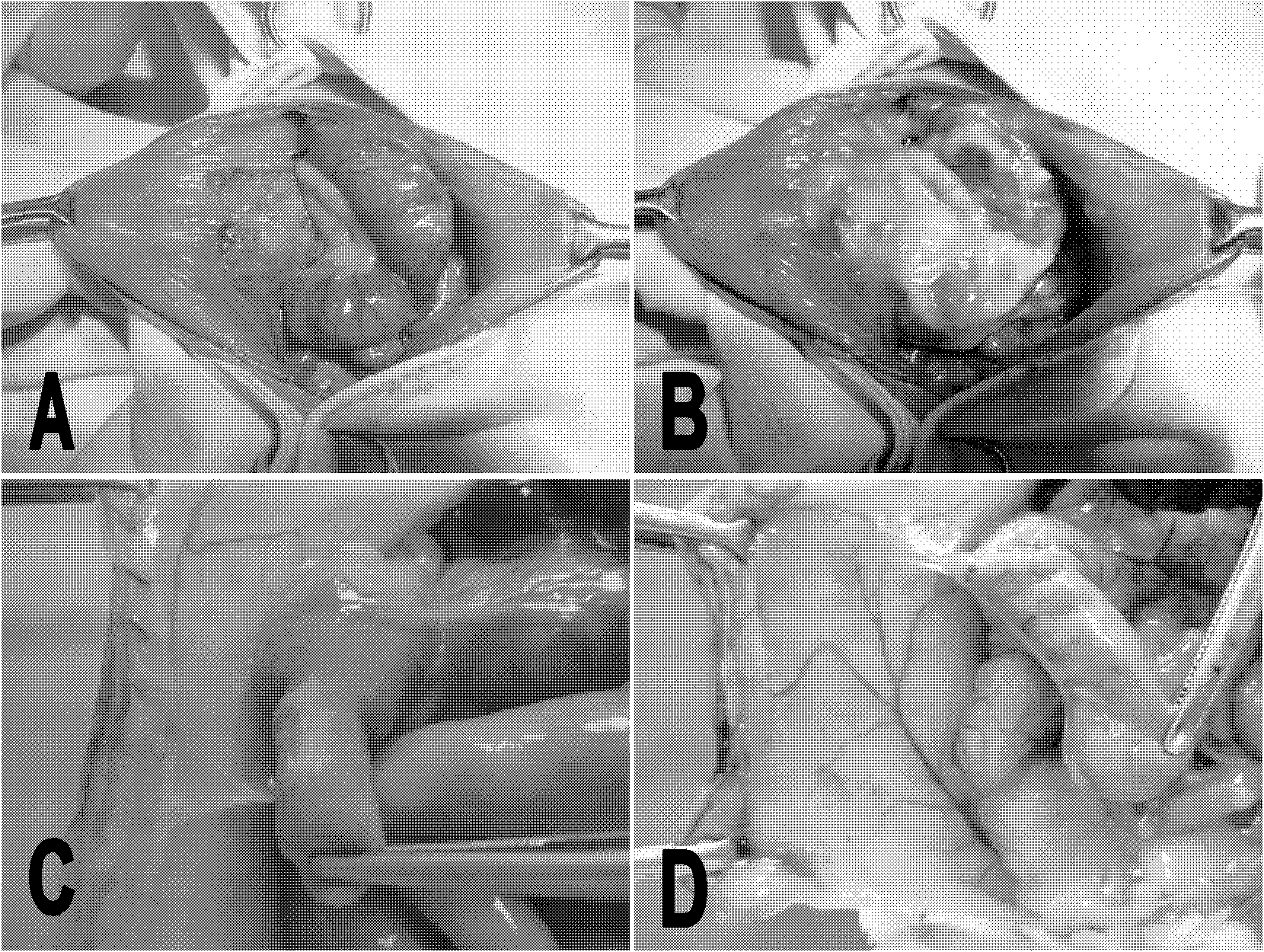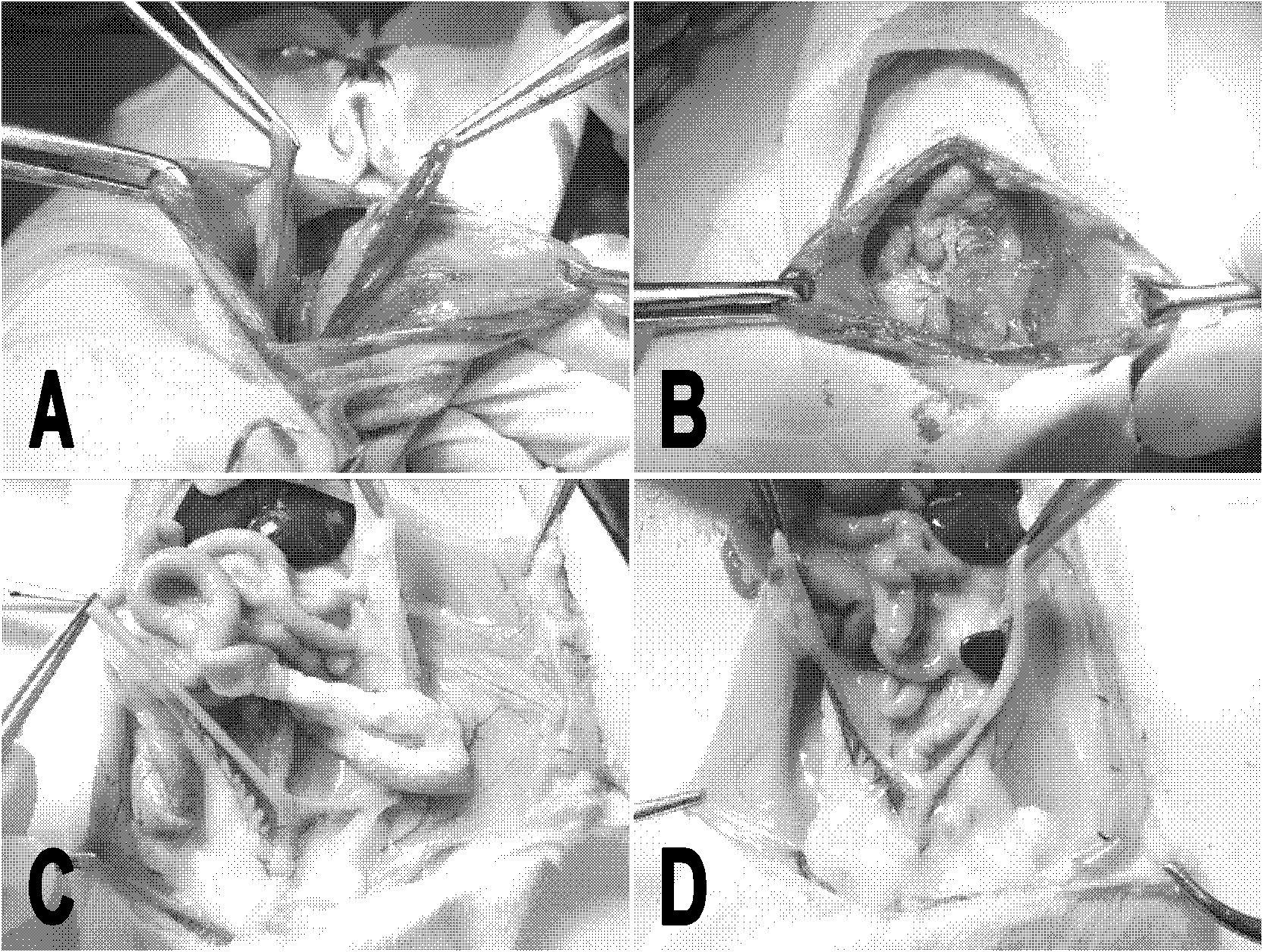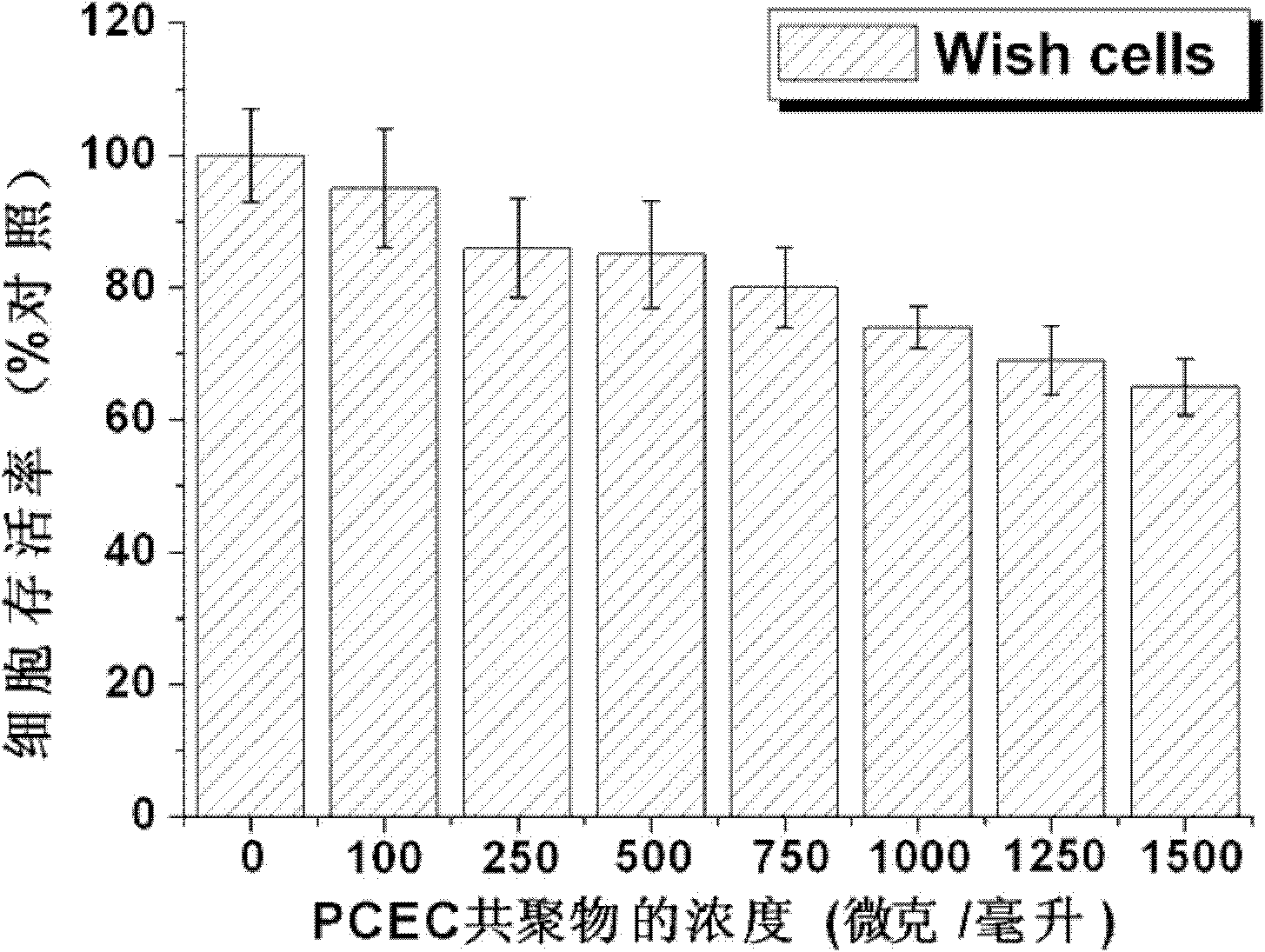Application of PCL-PEG-PCL tri-block copolymer in preparation of medical anti-blocking material
A technology of C500-E1000-C500 and C500-E2000-C500, which is applied in the field of PCL-PEG-PCL triblock copolymers in the preparation of medical anti-adhesion materials, can solve the problems of unfavorable human safety, non-biodegradable, short residence time, etc. problems, to achieve outstanding comprehensive performance, rapid biodegradation, and good biocompatibility
- Summary
- Abstract
- Description
- Claims
- Application Information
AI Technical Summary
Problems solved by technology
Method used
Image
Examples
Embodiment 1
[0040] Synthesis and verification of embodiment 1 PCL-PEG-PCL copolymer
[0041] 1) Synthesis of PCL-PEG-PCL copolymer
[0042] The brief synthetic route of PCL-PEG-PCL copolymer of the present invention is as follows Figure 4 shown.
[0043] according to figure 1 The synthesis route of the method is to add a certain amount of polyethylene glycol (PEG) and ε-caprolactone (ε-CL) in a three-necked flask equipped with a stirrer, and use stannous octoate as a catalyst, at 120-180 ° C, nitrogen The product is obtained after reacting for 3-24 hours under protected conditions, cooled to room temperature for purification, and dried.
[0044] According to the method described above, C 500 -E 1000 -C 500 、C 500 -E 2000 -C 500 、C 1000 -E 2000 -C 1000 、C 500 -E 1540 -C 500 、C 700 -E 1000 -C 700 、C 800 -E 1000 -C 800 、C 1000 -E 1000 -C 1000 、C 1000 -E 1500 -C 1000 、C 1500 -E 1500 -C 1500 and C 1000 -E 600 -C 1000 and other series of copolymers (see Table 1...
Embodiment 2
[0052] Embodiment 2 uses PCL-PEG-PCL copolymer to prepare medical anti-adhesion material
[0053] The PCL-PEG-PCL triblock copolymer prepared by using the above-mentioned embodiment is prepared into a medical anti-adhesion material. Because each PCL-PEG-PCL three-block copolymer is made into the method principle of hydrogel is identical, and condition is very similar, so the present invention mainly cites C 800 -E 1000 -C 800 as an example.
[0054] The preparation process of the medical anti-adhesion material of the present invention is: first the C 800 -E 1000 -C 800 The copolymer is dissolved in physiological saline at a concentration of 5-40wt%, preferably at a concentration of 8-25wt%, fully stirred and mixed uniformly. The mixed physiological saline solution was heated and stirred at 50-60°C for about 5 minutes to form a translucent viscous liquid, which was cooled to below 4°C for use. There are two methods of use: 1: inject the anti-adhesion hydrosol around the ...
Embodiment 3
[0055] Embodiment 3 Anti-adhesion effect experiment of medical anti-adhesion material of the present invention
[0056] In this example, the hydrogel is used as an anti-adhesion barrier to investigate its effect on postoperative adhesion.
[0057] The specific method is to first dissolve the copolymer prepared in Example 2 in physiological saline to prepare a 15wt% solution, then refrigerate the sol-like hydrogel for more than 24 hours at below 4°C, and through crystallization, the water coagulates After the gel has finished gelling, when applying, directly spread the gel evenly around the wound in the abdominal cavity.
[0058] 1. Abdominal wall-cecum friction injury model: anesthetize the animal, open the abdomen, rub the cecum with dry gauze, damage the surface serosa layer, and peel off the serosa layer with a scalpel on the adjacent abdominal wall (mouse: 1×1cm ; rat: 2×2 cm). Then apply PCL-PEG-PCL hydrogel (mice: 0.2ml; rats: 1ml) on the injured surface evenly, and cl...
PUM
 Login to View More
Login to View More Abstract
Description
Claims
Application Information
 Login to View More
Login to View More - R&D
- Intellectual Property
- Life Sciences
- Materials
- Tech Scout
- Unparalleled Data Quality
- Higher Quality Content
- 60% Fewer Hallucinations
Browse by: Latest US Patents, China's latest patents, Technical Efficacy Thesaurus, Application Domain, Technology Topic, Popular Technical Reports.
© 2025 PatSnap. All rights reserved.Legal|Privacy policy|Modern Slavery Act Transparency Statement|Sitemap|About US| Contact US: help@patsnap.com



